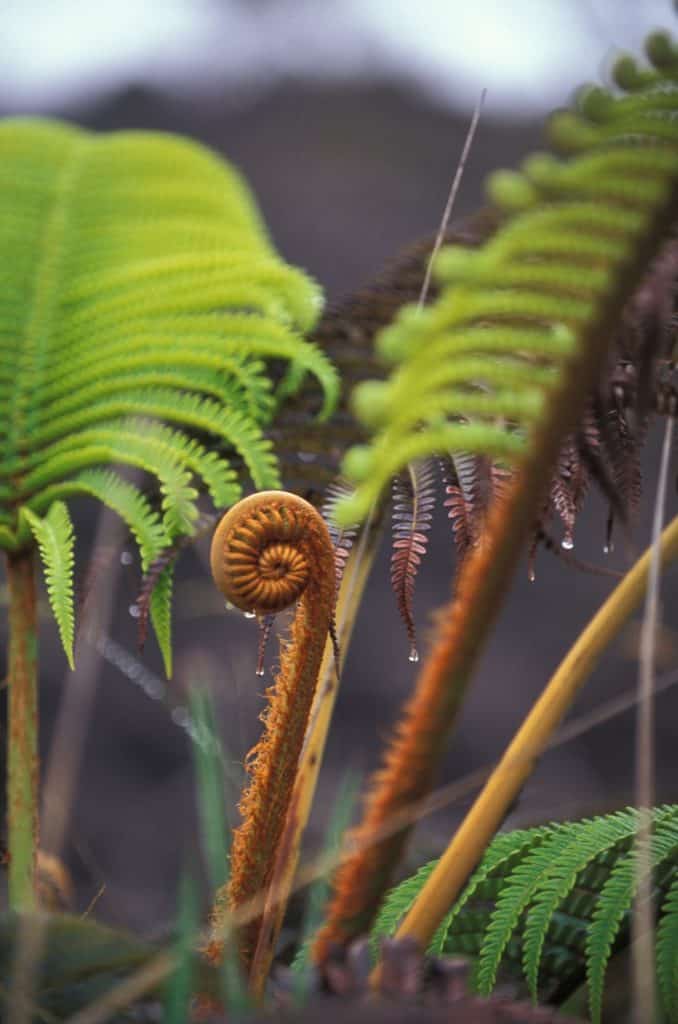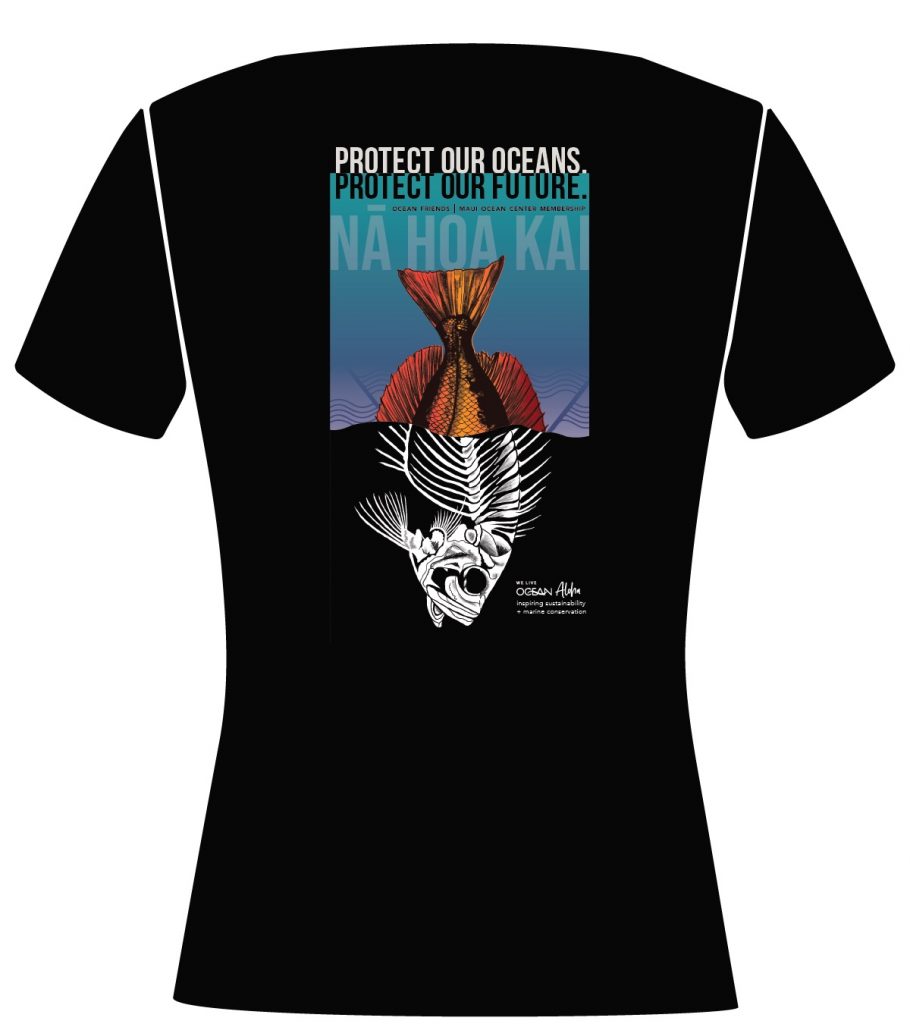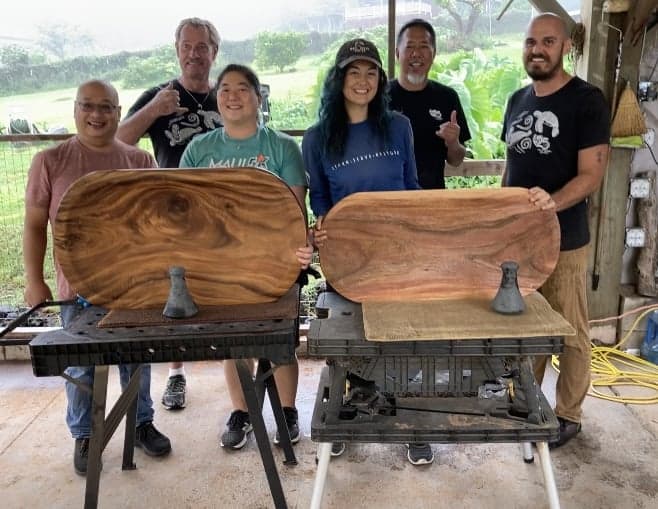June 9, 2023, MĀʻALAEA, MAUI, HI – Maui Ocean Center’s new Hawaiian Culture and Plant Tour is a multi-sensory experience: smell the subtle fragrance of the pōhinahina leaf; learn and recite ʻōlelo noʻeau (Hawaiian proverbs); use a pohaku ku’i ‘ai (poi pounding stone) to mash kalo (taro); and taste an assortment of crops originally brought to Hawai‘i by Polynesian settlers.
This innovative, hands-on tour is one of the many ways that Maui Ocean Center is redefining what an aquarium can be.
“From mauka to makai (mountains to ocean), everything is connected in Hawaiian culture,” said Jessica Colla, Maui Ocean Center’s Director of Education. “This holistic view applies to Maui’s many different watersheds. As water flows downstream, plants filter toxins from the environment, ultimately cleaning the water before it’s deposited into the ocean.”

That interconnectedness is highlighted in the Kumulipo, or Hawaiian creation chant, with the concept of duality — that many land plants have a marine counterpart in the ocean. “These species are the guardians of one another,” said Sara Peyton, one of the naturalists conducting the tours. “If one is degrading in its environment, the other is likely struggling as well.”
Examples of this duality include:

The new tour will focus on native plants (species that are found naturally in Hawai‘i) and endemic plants (those that are found only in Hawai‘i and nowhere else on Earth). Guests will also learn about “canoe plants,” or plants brought via canoe to the Hawaiian islands by Polynesian voyagers.
This spring, Maui Ocean Center staff members participated in a workshop with nonprofit organization Lo’iloa to create the papa ku’i ‘ai (poi pounding boards) that tour participants will use to make poi for themselves.

The tour ends with a sampling of canoe plants, including kalo and ‘uala (sweet potato), provided by the aquarium’s award-winning Seascape restaurant.
“Expect to use all of your senses during this informative and interactive tour that showcases the beauty of Hawaiian culture,” said Maui Ocean Center General Manager Tapani Vuori.
Maui Ocean Center developed the tour with the support of the Maui Nui Botanical Gardens (MNBG), a native Hawaiian ethnobotany garden in Kahului. A portion of ticket sales will support MNBG’s coastal native plant restoration efforts.
Space is limited on the 90-minute tours, which are currently offered on Tuesdays and Thursdays. Reserve your spot at mauioceancenter.com/experiences/hawaiian-culture-and-plant-tour
This spring, Maui Ocean Center staff members participated in a workshop with nonprofit organization Lo’iloa to create the papa ku’i ‘ai (poi pounding boards) that tour participants will use to make poi for themselves.
Immerse Yourself in our SEA-News featuring Hawaiʻi’s marine life, inspirational conservation, and glimpses behind-the-scenes.